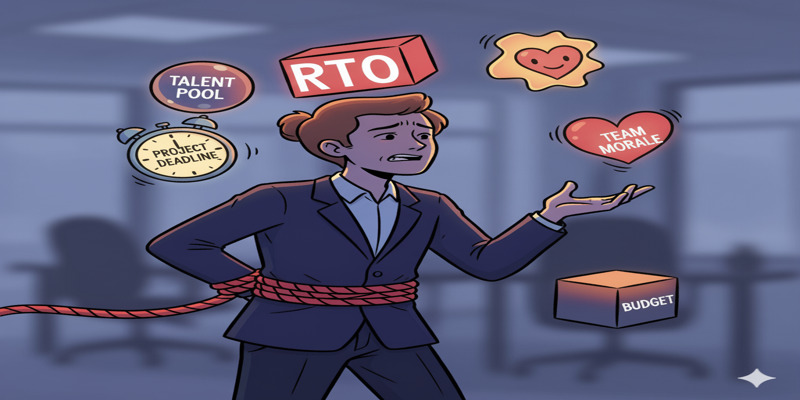The RTO Tax
This month, we've had quite a few interesting chats on the "RTO Tax" friction in today's market.
I spoke with Frank, a VP of Engineering at a growing SaaS business. He had a massive problem: a critical Principal Architect role had been open for 5 months.
His company had a strict, 4-day RTO policy. (not great, I know)
Frank wasn't fighting the rule. He was fighting the market reality it created.
He kept losing A-Players—both local and semi-remote—who simply chose competitors offering fully remote or less than two days a week in the office.
The RTO Tax he was paying was simple: 150 days of lost senior leadership on his roadmap.
To be straight to the point with him: "Your RTO isn't the problem. Your talent map is the problem. You're searching where the A-Players used to be."
The Strategic Solution:
We advised stopping the search for the "general cloud architect" and starting to look for the "Specialised Collaborator"—the A-Player who values the predictability of a fixed office schedule.
Profile Shift: We prioritised candidates who explicitly listed structured, high-visibility teamwork and in-person mentorship as top career goals.
RTO as a Feature: We rebranded the 4-day RTO as the "High-Velocity Innovation Block"—time dedicated only to high-stakes, direct collaboration.
The Result: We attracted an A-Player who was frustrated by the constant async delays of their previous flexible/remote role. They saw the 4 days as a strategic advantage.
When RTO is non-negotiable, you don't argue for flexibility.
You get surgically precise, redefining your ideal candidate to one who views your restriction as their competitive edge.


Comments
Be The First To Post